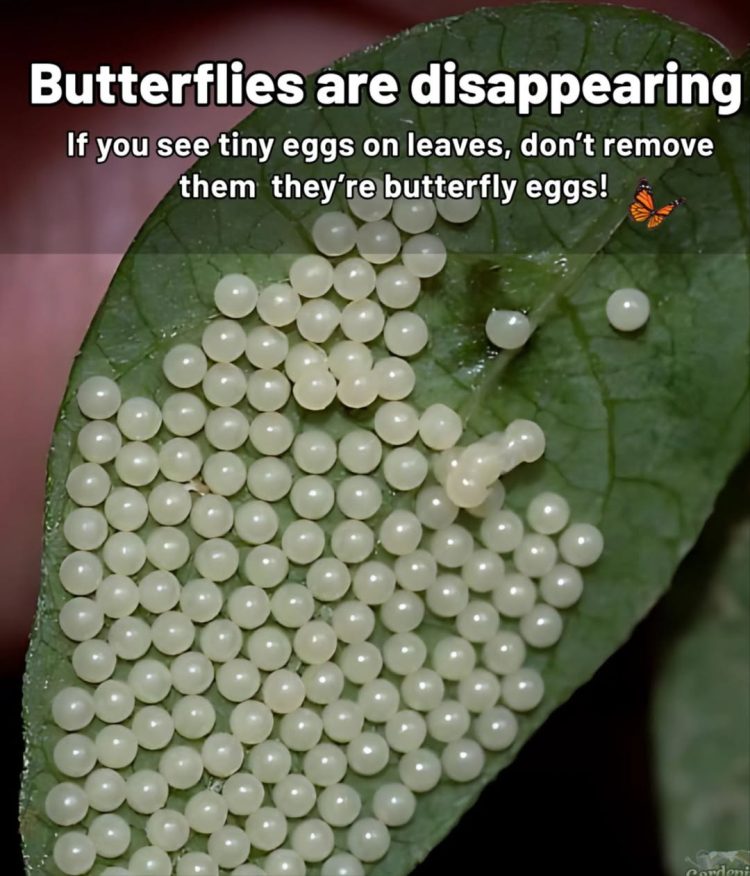🦋 Butterflies Are Disappearing — Here’s How You Can Help
In gardens, forests, and meadows around the world, a quiet crisis is unfolding: butterflies are disappearing. These delicate, colorful pollinators—symbols of transformation and beauty—are declining in numbers due to habitat loss, pesticide use, light pollution, and climate change.
But there’s good news: you can make a difference, right from your own backyard.
🌱 The Hidden Treasure on Leaves: Butterfly Eggs
Have you ever spotted tiny white or pale yellow balls on the underside of a leaf and instinctively wiped them off, thinking they were pests? You may have unknowingly destroyed future butterflies.
Those tiny spheres are often butterfly eggs. Left undisturbed, they hatch into caterpillars, which eventually metamorphose into beautiful butterflies—essential players in the pollination of flowers, fruits, and vegetables.
Removing them means breaking the cycle. Let them be, and you’re helping restore balance to our environment.
💡 Why Butterflies Matter
- Pollination: Butterflies help pollinate plants, ensuring the reproduction of wildflowers and food crops.
- Biodiversity Indicators: A thriving butterfly population indicates a healthy environment.
- Food Web Support: They provide nourishment for birds, bats, and other small animals.
Their disappearance is a warning sign that something is wrong.
🌼 5 Simple Ways You Can Help Butterflies Thrive
- Leave Eggs and Caterpillars Alone
Never remove tiny eggs from leaves—they’re the start of the butterfly life cycle. - Avoid Pesticides
Insecticides and herbicides harm butterflies at all stages of life. Opt for natural pest control methods. - Plant Native Flowers
Grow butterfly-friendly plants like milkweed, coneflowers, and lavender. Native plants provide essential nectar and shelter. - Let Nature Stay Wild
Leave fallen logs, leaf piles, and dead wood undisturbed—they provide shelter for caterpillars and chrysalises. - Reduce Light Pollution
Turn off outdoor lights at night. Light confuses butterflies and disrupts their nocturnal behaviors.
